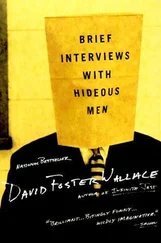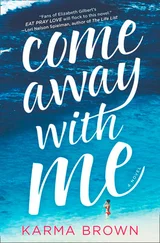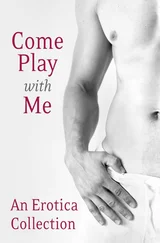Scott MacDonald - A Critical Cinema 2 - Interviews with Independent Filmmakers
Здесь есть возможность читать онлайн «Scott MacDonald - A Critical Cinema 2 - Interviews with Independent Filmmakers» весь текст электронной книги совершенно бесплатно (целиком полную версию без сокращений). В некоторых случаях можно слушать аудио, скачать через торрент в формате fb2 и присутствует краткое содержание. Год выпуска: 1992, ISBN: 1992, Издательство: University of California Press, Жанр: Прочая документальная литература, на английском языке. Описание произведения, (предисловие) а так же отзывы посетителей доступны на портале библиотеки ЛибКат.
- Название:A Critical Cinema 2: Interviews with Independent Filmmakers
- Автор:
- Издательство:University of California Press
- Жанр:
- Год:1992
- ISBN:9780585335100
- Рейтинг книги:3 / 5. Голосов: 1
-
Избранное:Добавить в избранное
- Отзывы:
-
Ваша оценка:
- 60
- 1
- 2
- 3
- 4
- 5
A Critical Cinema 2: Interviews with Independent Filmmakers: краткое содержание, описание и аннотация
Предлагаем к чтению аннотацию, описание, краткое содержание или предисловие (зависит от того, что написал сам автор книги «A Critical Cinema 2: Interviews with Independent Filmmakers»). Если вы не нашли необходимую информацию о книге — напишите в комментариях, мы постараемся отыскать её.
A Critical Cinema 2: Interviews with Independent Filmmakers — читать онлайн бесплатно полную книгу (весь текст) целиком
Ниже представлен текст книги, разбитый по страницам. Система сохранения места последней прочитанной страницы, позволяет с удобством читать онлайн бесплатно книгу «A Critical Cinema 2: Interviews with Independent Filmmakers», без необходимости каждый раз заново искать на чём Вы остановились. Поставьте закладку, и сможете в любой момент перейти на страницу, на которой закончили чтение.
Интервал:
Закладка:
MacDonald:
How was it, coming back here?
Breer:
When I came back in 1960, we had two kids and a house on loan up in Rhode Island, near Jamestown (where we'd stayed a few years before, and I'd made
Jamestown Baloos
). The house wasn't heated, so we could only stay there until the end of October. Then I rented an old farmhouse in Westchester that had rats in the basement, which is where I worked on film. I used to chase them around with a broom. I made
Inner and Outer Space
there and also the Tinguely film [
Homage to Jean Tinguely's Homage to New York,
1960].
I began to hang out with pop artists. I didn't know many of the independent filmmakers. I had met some in Brussels in 1959, but I didn't connect very strongly with them yet, though Amos [Vogel] must have been throwing us together at his Cinema 16 screenings.
When I got back here originally, I thought I had a connection. In France someone had sent me to Henri Langlois. He was enthusiastic about my filmshe and Lotte Reiniger who was there too. Langlois said they were the best experimental films he'd seen since 1928. He wrote a letter to Richard Griffith at MoMA in New York, and sent a reel of my
Page 31
films ahead. A lunch was arranged with me, Griffith, and John Adams, Griffith's assistant; after lunch they went back to the museum to look at the films. Three or four days went by and no word. I went by the museum, and another assistant came out, handed me the films, and said, "Mr. Griffith really prefers Westerns." It was a real cheeky thing to say, and I didn't know whether it was a put down of my films or of Griffith. Then somebody sent me to Margareta Akermark, who was in charge of film circulation at MoMA. She was very skeptical, but she sent me to a woman who ran an educational film distribution company. I can't remember the name. I do remember she went into a frenzy. She couldn't decide whether my films were good or awful, but finally she decided they were awful. She sent me back to Akermark.
I went back with my hat in my hand, and Akermark sent me to Amos. He was the only one who could deal with this kind of film. Amos wanted to drive a hard bargain, sign a contract, exclusive this, can't do thatand didn't promise me much return. But he would show the films, and it's all I had and so it was fine: I went with Amos.
MacDonald:
Who else did you meet?
Breer:
Brakhage was gone [to Colorado] by then. I met Madeline Tourtelot. She made films in Chicago, including a documentary about Harry Partch (he designed his own musical instruments and composed music for them). I'd met Marie Menken in 1958 in Brussels at the experimental film festival that Jacques LeDoux created, and I'd met Kenneth Anger there too. He was kind of silly and very gay and private. I also met Agnes Varda. And Peter Kubelka. He and I got along; there were similarities in our filmsby that time he had done
Adebar
[1957] and
Schwechater
[1958]that made them different from anybody else's.
MacDonald: Blazes
[1961] was the first collage film you made after returning to the United States. It seems a bit more systematic than your earlier collage films.
Breer: Blazes
was an attempt to put my money where my mouth was. I'd written a piece on abstract expressionism as being just fossilized evidence that some action had taken place previously and that film could actually give you the action while you were looking at it; you didn't have to look at streaks of dried paint anymore, you could look at streaks of live action. It was a thin argument, but it made me think about what I was doing. I was adding up what I could do with film that painters couldn't do. I wasn't competing with painting; I was legitimizing film. Uniqueness enhances the market value of art, but I didn't want to participate in that way of thinking. I had my democratic idealism to justify working in filmand I didn't even need that: film was just fun. But I also had a romantic bittersweet attitude about the limited commercial possibilities of working my way. The gap between the legitimacy of
Page 32
painting and of film art was so wide that I couldn't help openly challenging it. Anality makes the art world survive: the guy who's anal retentive and wants to have a better art collection than the next guy. You can get anal about paintings, but how can you get anal about film? It's an endless run that you can keep printing and reprinting.
MacDonald:
What led to
Pat's Birthday
[1962], the live-action film you made with Claes Oldenburg?
Breer:
After I did that film, I seriously debated going into live-action filmmaking. But I didn't think I could deal with production, especially with getting the money. I had four kids. And I didn't want to quit working on film until I had the money. I guess the thing that bothered me most was having to get involved with other people on an artistic level. With Oldenburg there was no problem because we were on the same wavelength.
Actually, before
Pat's Birthday,
I shot a live-action film that became a segment on the first installment of
David Brinkley's Journal
. I had moved into a little house in Palisades that had been owned by this TV producer, Ted Yates. When Maya Deren's Creative Film Foundation awards were announced in the
New York Times,
and he saw my name, he decided to look me up [Breer won the Award of Distinction for
Inner and Outer Space
from the Creative Film Foundation in 1961; in 1957 he had won a Special Citation for
Recreation
]. He looked at some films and signed me up to edit some footage that was part of a gangster film he was doing with Ben Hecht. I forget how that project fizzled, but anyhow, he got himself hired to produce
David Brinkley's Journal,
a spin-off from
The Huntley/Brinkley Report
. I told him about the massive kinetic art show in Stockholm, which had been put together by Pontus Hulten, who at that time was director of the Moderna Museet in Stockholm. I was taking part in that show, and I guess he thought it would be an interesting subject. He hired me as a coproducer. It was a hurry-up job, and suddenly I found myself in Stockholm in the middle of the museum with a five-person crew who didn't speak Englishall these people waiting for me to say the fatal words: "Lights, camera, action!" I didn't know how to say them in English, much less in Swedish, but I shot the filmor rather my cameraman shot it on a new Arriflex which, we found out a month later, he couldn't focus. The stuff was developed in New York, and it wasn't until I got back here that I realized that most of this guy's footage couldn't be used. Fortunately, I'd taken my Bolex and shot a lot of footage. That became the backbone of a fifteen-minute
Brinkley Journal
segment. I hired Mimi Arshum, a friend of Sasha Hammid's, and a good editor, because I didn't know what the hell I was doing. She helped me put together a tentative assemblage, which we took to Washington. As soon as Brinkley started watching, he said, "Where's the
Page 33
establishing shot?" I knew I was in trouble. I'd syncopated everything. I even had a pixilated sequence of the king of Sweden arriving at the museum and jerking through the whole exhibit shaking hands rapid fire with all the other dignitaries. Brinkley looked at the whole thing, said some patronizing word to me, and we knew that was that. The assemblage was eventually given over to their editors, over my not quite dead body, and they cut the film. It appeared on television, with a conventional talking-heads interview with Hulten which they'd gone back to Stockholm to shoot. It was my footage, cut along the lines of my assemblage, but without the rhythms. I sat there watching it, cringing, with my parents in Michigan. They were proud: my name was in the credits. I did get paid, but I felt like I'd been raped. When I tried to get the footage later, they wouldn't cough it up. I
Читать дальшеИнтервал:
Закладка:
Похожие книги на «A Critical Cinema 2: Interviews with Independent Filmmakers»
Представляем Вашему вниманию похожие книги на «A Critical Cinema 2: Interviews with Independent Filmmakers» списком для выбора. Мы отобрали схожую по названию и смыслу литературу в надежде предоставить читателям больше вариантов отыскать новые, интересные, ещё непрочитанные произведения.
Обсуждение, отзывы о книге «A Critical Cinema 2: Interviews with Independent Filmmakers» и просто собственные мнения читателей. Оставьте ваши комментарии, напишите, что Вы думаете о произведении, его смысле или главных героях. Укажите что конкретно понравилось, а что нет, и почему Вы так считаете.











